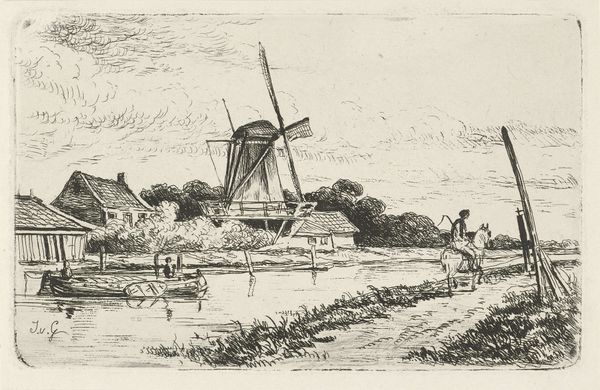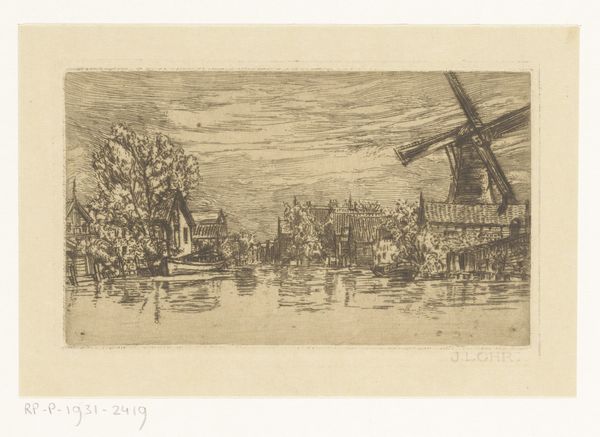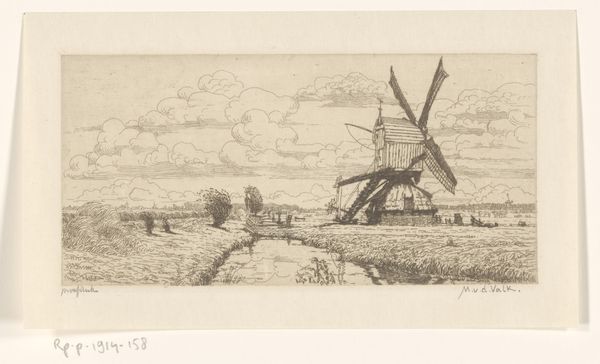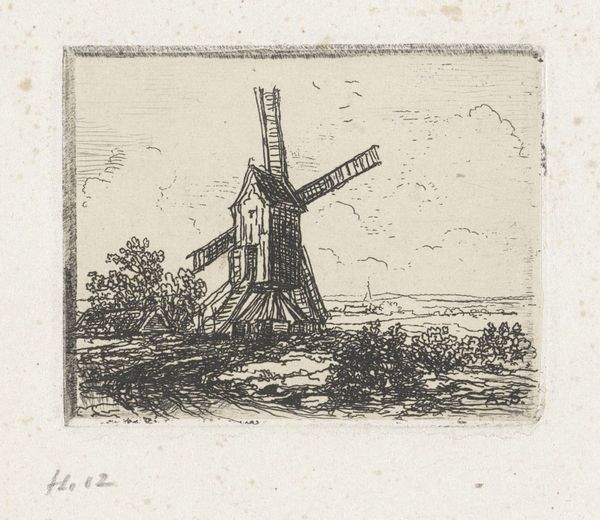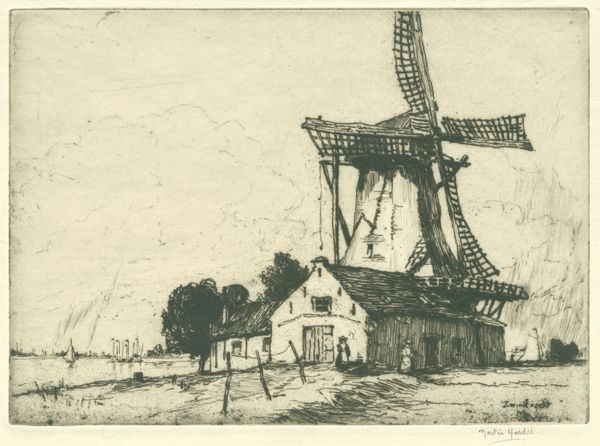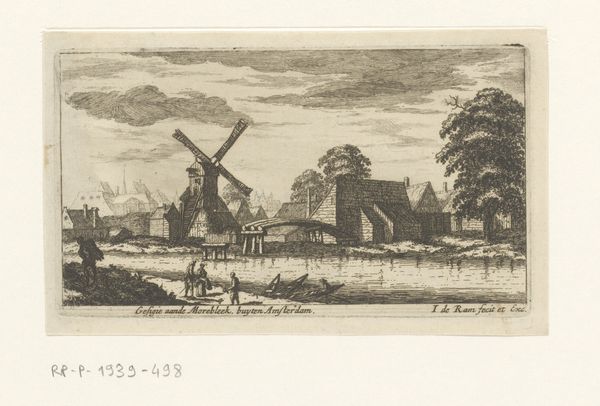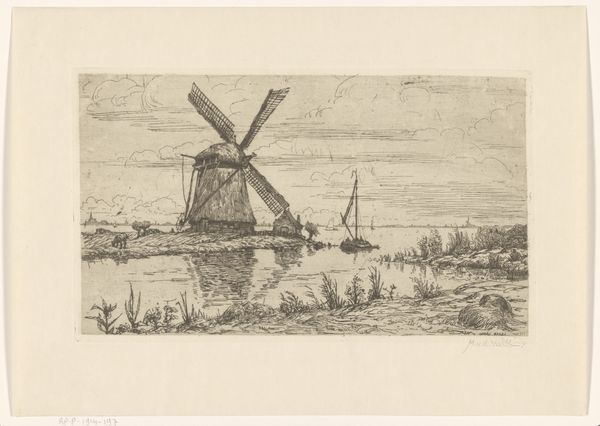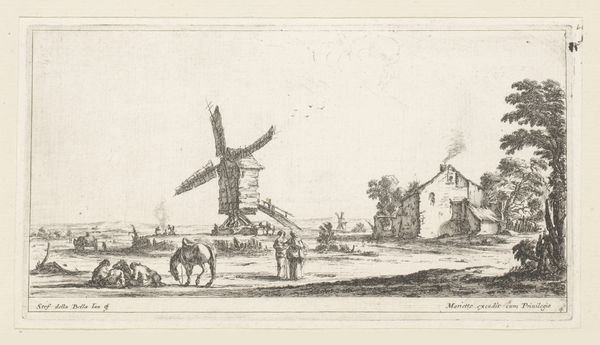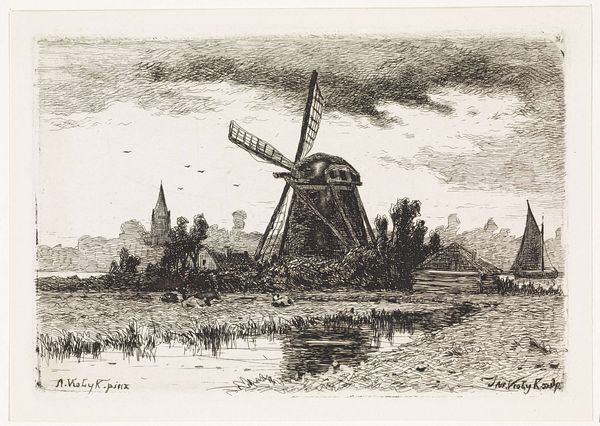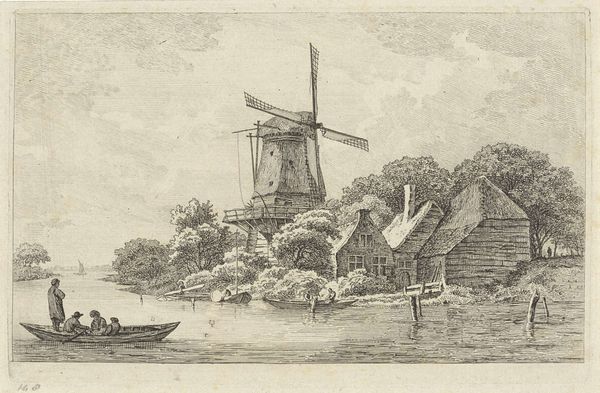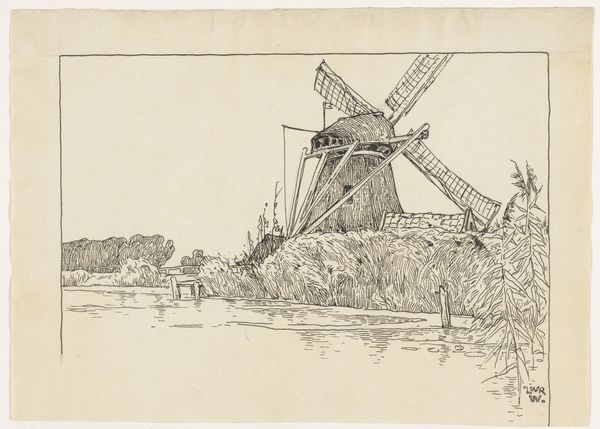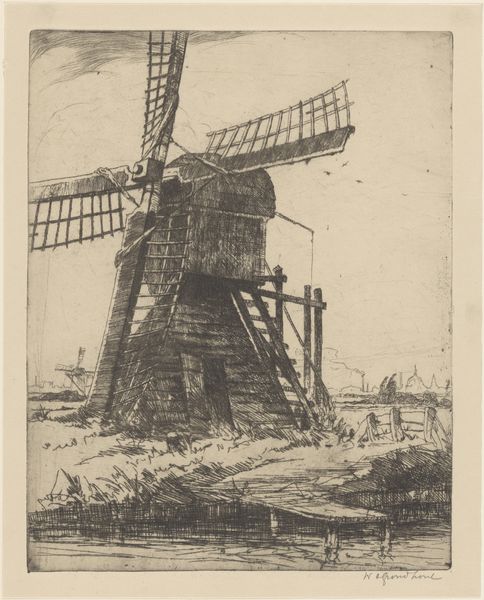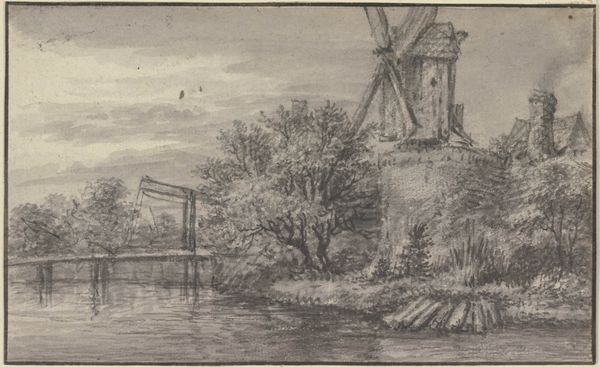
print, etching
#
dutch-golden-age
# print
#
etching
#
landscape
#
line
#
realism
Dimensions: image: 6.8 × 11 cm (2 11/16 × 4 5/16 in.) plate: 8 × 12 cm (3 1/8 × 4 3/4 in.) sheet: 22.7 × 13.7 cm (8 15/16 × 5 3/8 in.)
Copyright: National Gallery of Art: CC0 1.0
Curator: Let's take a look at Maxime Lalanne's 1877 etching, "Un Site Hollandais (A Zaandam)." Editor: My first impression is that it's quite tranquil. The composition leads the eye gently through the waterways, a picturesque display. Curator: Lalanne’s mastery is evident in his use of line. Notice how he varies the density and direction of the etched lines to create depth and texture. The precision is remarkable; observe how light catches the windmills and the reflections in the water. Editor: But these tranquil canals and windmills also speak to the labor and industry that shaped Dutch society. Canals served as vital transportation arteries, facilitating trade, connecting communities. Windmills, beyond picturesque charm, symbolize technological innovation and resourcefulness, central to land reclamation and power in this period. The print romanticizes, yes, but also nods to the material realities shaping daily lives. Curator: I agree it references a specific time, but look closer: see the linear patterns mimic the landscape itself. The dense vertical lines evoke the solidity of the buildings, while the lighter, horizontal strokes suggest the fluidity of water and the expanse of the sky. He’s captured the essence of place through purely visual means. Editor: While that formal analysis resonates, let's not strip this piece of context. The “Dutch Golden Age” looms large in such scenes, often presenting idealized views of prosperity that obscure underlying social tensions of the time. Whose labor built this picturesque landscape, and who benefited most from its idyllic waterways? Lalanne's piece invites us to look beneath surface harmony to question the narratives embedded in these landscapes. Curator: But his technique transcends time, no? The use of hatching and cross-hatching to model form is masterful, a kind of structural equation to establish form and volume, no matter what social implications it portrays. It's an achievement of visual representation. Editor: Undoubtedly, and I agree with the mastery, I just wonder about its resonance today – do we continue to embrace an unquestioning idealization of landscapes like this, or can we view them critically, understanding how representations shape our perceptions of history? Curator: Well, I suppose we must appreciate the skillful layering while staying conscious about art and history overall. Thank you for enriching my perspective. Editor: Likewise. The convergence of close looking and broader societal consciousness – a richer understanding for everyone, hopefully.
Comments
No comments
Be the first to comment and join the conversation on the ultimate creative platform.
